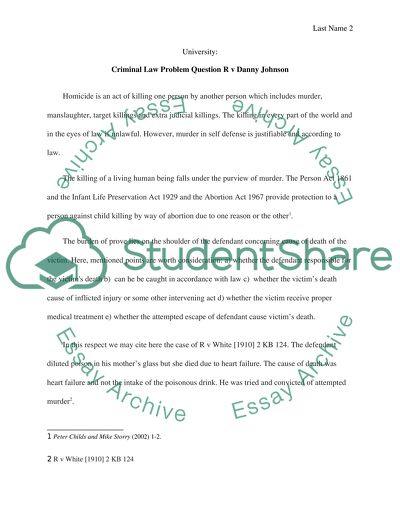Cite this document
(“Criminal Law. Problem Question. R v Danny Johnson Essay”, n.d.)
Criminal Law. Problem Question. R v Danny Johnson Essay. Retrieved from https://studentshare.org/law/1440721-criminal-law-problem-questionr-v-danny-johnson
Criminal Law. Problem Question. R v Danny Johnson Essay. Retrieved from https://studentshare.org/law/1440721-criminal-law-problem-questionr-v-danny-johnson
(Criminal Law. Problem Question. R V Danny Johnson Essay)
Criminal Law. Problem Question. R V Danny Johnson Essay. https://studentshare.org/law/1440721-criminal-law-problem-questionr-v-danny-johnson.
Criminal Law. Problem Question. R V Danny Johnson Essay. https://studentshare.org/law/1440721-criminal-law-problem-questionr-v-danny-johnson.
“Criminal Law. Problem Question. R V Danny Johnson Essay”, n.d. https://studentshare.org/law/1440721-criminal-law-problem-questionr-v-danny-johnson.


